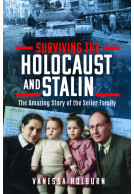The Amritsar Massacre (ePub)
The British Empire's Worst Atrocity
Imprint: Pen & Sword History
File Size: 6.5 MB (.epub)
Pages: 168
Illustrations: 32
ISBN: 9781526745781
Published: 16th April 2019
| Other formats available - Buy the Hardback and get the eBook for free! | Price |
|---|---|
| The Amritsar Massacre Hardback Add to Basket | £19.99 |
The shocking massacre of 379 unarmed Indians in the enclosed Jallianwala Bath park on the command of a British army officer on April 13th, 1919 is considered a brutal example of colonial abuse. Immediately afterwards martial law was established with harsh penalties and punishments. Often considered as the darkest period of the Raj, the massacre helped galvanise the Indian Nationalist movement, making full independence inevitable.
Yet both the Queen and former Prime Minister David Cameron have side stepped calls for an apology for the mass shooting during official visits to Amritsar. One hundred years on, is it time to say sorry?
This book examines the context in which the infamous event took place – and asks why something that happened 100 years ago remains so controversial. Did the order to fire prevent further native and imperialist bloodshed in the Punjab? Was enough done at the time to investigate if General Robert Dyer acted alone or with the full support of his superiors? Who was ultimately responsible for the 1,650 rounds of ammunition discharged that day?
Readers will discover how tensions within the region – and political and professional ambitions on both sides – combined to create a chain of events that signaled the beginning of the end for the British Raj.
As featured on Old Barbed Wire Blog
Old Barbed Wire Blog
As featured in
The Commonwealth Lawyer
⭐⭐⭐⭐⭐
Amazon Customer
Easy to read account
I knew shamefully little about the Amritsar Massacre until I picked up this book - and it answered all my questions. Following a clear structure it gives a concise account of British rule in India, making it easy to read and understand what happened at Amritsar, why it happened and the implications on events that followed. A good introduction to this period in history.
⭐⭐⭐⭐⭐
Amazon Customer
This is an accessible read – and explains how and why the British ended up in charge of India and then goes on to outline the political build up to the massacre at Amritsar. I like the way the book focuses on the need for a proper understanding of the events across all sections of the British population – and the ins and outs of why an apology is needed. It shows why the massacre is still politically relevant today.
This book is for you if you’ve never studied British Indian history but want to understand more about the realities of what went on. It’s not a heavyweight historical re-telling – but I don’t think it’s supposed to be. This is about why Amritsar matters today – and it achieves that goal
At Amritsar, mistakes and misunderstandings of both sides combined to create a tragedy. It happened against a background of civil disobedience and a fight by some parts of Indian society for independence. Those are always circumstances where terrible acts of violence can occur. The author has reviewed this background, the people and politics involved, and left the reader to decide whether there is any need or merit for contrition. It is an interesting review that casts some new light on an infamous event in history.
Firetrench
Read the full review here
Article: 'Twyford author asks: ‘Is now the time to say sorry over Amritsar?’ as featured by
The Wokingham Paper (online & print)
As featured in
The Bookseller Buyers Guide
About Vanessa Holburn
This is the fourth book by journalist and author Vanessa Holburn. Her titles cover historical and modern day political topics and she was recently part of a law-changing campaign that took her to Number 10.
Vanessa’s written work has appeared in national newspapers including The Telegraph, The Daily Express, The Mirror and The Sun, and magazines such as Private Eye, Fabulous, Bella and Woman’s Own. She has appeared on radio and television, and spoken on podcasts and at literary festivals, libraries, universities and museums.


















